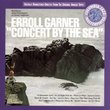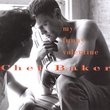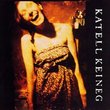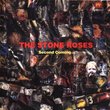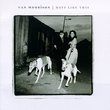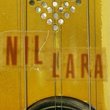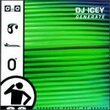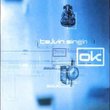| All Artists: Kitty Brazelton, Manhattan Brass Quintet Title: Kitty Brazelton: Chamber Music for the Inner Ear Members Wishing: 1 Total Copies: 0 Label: Composers Recordings Inc CRI Original Release Date: 3/1/2002 Release Date: 3/1/2002 Album Type: Import Genre: Classical Styles: Chamber Music, Historical Periods, Classical (c.1770-1830) Number of Discs: 1 SwapaCD Credits: 1 UPC: 090438088923 |
Search - Kitty Brazelton, Manhattan Brass Quintet :: Kitty Brazelton: Chamber Music for the Inner Ear
 | Kitty Brazelton, Manhattan Brass Quintet Kitty Brazelton: Chamber Music for the Inner Ear Genre: Classical
Brazelton composed Come Spring! for the Manhattan Brass Quintet in 1996 after MBQ hornist Greg Evans, while subbing in Brazelton?s Dadadah, asked her what her ?serious? music was like. In response she created a work that s... more » |
CD Details
Synopsis
Album Description
Brazelton composed Come Spring! for the Manhattan Brass Quintet in 1996 after MBQ hornist Greg Evans, while subbing in Brazelton?s Dadadah, asked her what her ?serious? music was like. In response she created a work that somehow blends ingredients from Morton Feldman, James Brown, Howard Hanson, Miles Davis, Janis Joplin and even Elliott Carter into a sound world entirely her own. In Brazelton?s description of the ?riff-centric? first movement, ?Dogwood Petals & Hormones,? she ponders: ?Why doesn?t the rock world recognize a wall of brass is as hormonal as a Marshall stack?? ?Dogwood Petals & Hormones? is an exuberant challenge to that question featuring the brass instruments in contours that run the gamut from psychedelic trip-out harmonic ambiguity to heavy metal unison blaring. The ?groove-centric? tri-partite second movement, ?Miles Through an Open Window,? begins with an intense extended-technique French horn solo called ?what you think you might be hearing,? which Brazelton, in characteristic polyglot fashion, describes as a ?funk haiku? in the score. It leads directly into ?when you were sure it WAS what you heard? in which short polyrhythmic bursts from the other four brass players come across as a West African tuned drum ensemble against the wailing of the horn, which Brazelton in the score, requests to sound like a ?snare drum.? In the concluding section, ?hearing it again later in your mind,? the horn and tuba are actually literally transformed into percussion instruments: the players are instructed to quietly tap their nails on the resonant part of their instruments? bells. The ?voice-centric? third movement ?Harmonic Fable,? which is also tri-partite, merges a bebop-like riff with a majestic contrapuntal setting of the Gregorian hymn ?Pange Lingua.? Lest we become misled by this sudden incursion of medieval spirituality, Brazelton, a self-described ?21st-century infidel,? labels the three inner sections ?animism,? ?the rise of the church? and ?we shoot the moon and return to our keen animal state.? Brazelton describes the ?party-centric? final movement, ?First Second Seder at the Knitting Factory? as ?a rave-up in the truly punky attitude of NYC.? The title is a reference to the Manhattan alternative music club originally located on Houston Street, between SoHo and the East Village. In 1994?96, club owner Michael Dorf threw annual ?Second Seder? feasts for the musician community who helped tear down the walls that divided various genres of music throughout the 20th century. The movement combines jazz-like improvisation with strictly notated polyrhythms culminating in a euphoric group scream (MBQ?s idea). R, completed in its current incarnation in 1998, has gone through multiple compositional transformations. The original idea dates back to a 1987 MIDI computer improvisation sounding like ?stream-of-consciousness run-on sentences.? After Brazelton played it for the lead guitarist of her then band Hide The Babies, he was mystified since it was unlike any of the tightly-scripted three-minute ABABCBBB rock songs she had been writing. Seven years later, Brazelton morphed the piece into a Serenade for Viola, Guitar and Bongos premiered by Jay Kauffman at Roulette with Gregor Kitzis and Steven Swartz in 1994. After the premiere, still unsatisfied, Brazelton doubled some of the voicings in the score adding a double-bass to deepen the guitar and a textless vocal line, which she sings on the present recording, making the viola melody (played on a five-string violin by Lyris Hung for this recording) more haunting and mysterious. The result comes across as a bizarre half-dreamed lullaby, halfway between the magic realism of Claude Vivier and surreal exotica of Yma Sumac. Sonar Como Una Tromba Larga (To Sound Like a Great Waterspout) for trombone and tape (1998) was created expressly for the multifaceted Chris Washburne, a founding member of Brazelton?s Dadadah, whose musical passions include Latin jazz and comp
Similarly Requested CDs
| Joni Mitchell Night Ride Home Genres: Folk, Pop, Rock Label: Geffen Records | |
| Erroll Garner Concert By the Sea Genres: Jazz, Pop Label: Sony | |
| Chet Baker My Funny Valentine Genres: Jazz, Pop Label: Blue Note Records | |
| Katell Keineg O Seasons O Castles Genres: Folk, International Music, Pop, Rock Label: Elektra / Wea | |
| Stone Roses Second Coming Genres: Alternative Rock, Pop, Rock Label: Geffen Gold Line Sp. | |
| Van Morrison Days Like This Genres: Blues, Folk, Jazz, Pop, R&B, Rock, Classic Rock Label: Polydor / Umgd | |
| Nil Lara Nil Lara Genres: International Music, Pop, Rock, Latin Music Label: Metro Blue | |
| DJ Icey Generate Genres: Dance & Electronic, Pop, Rap & Hip-Hop Label: Full Frequency / Pgd | |
| Talvin Singh Ok Genres: Dance & Electronic, International Music, Pop Label: Universal Int'l | |

 Track Listings (10) - Disc #1
Track Listings (10) - Disc #1
